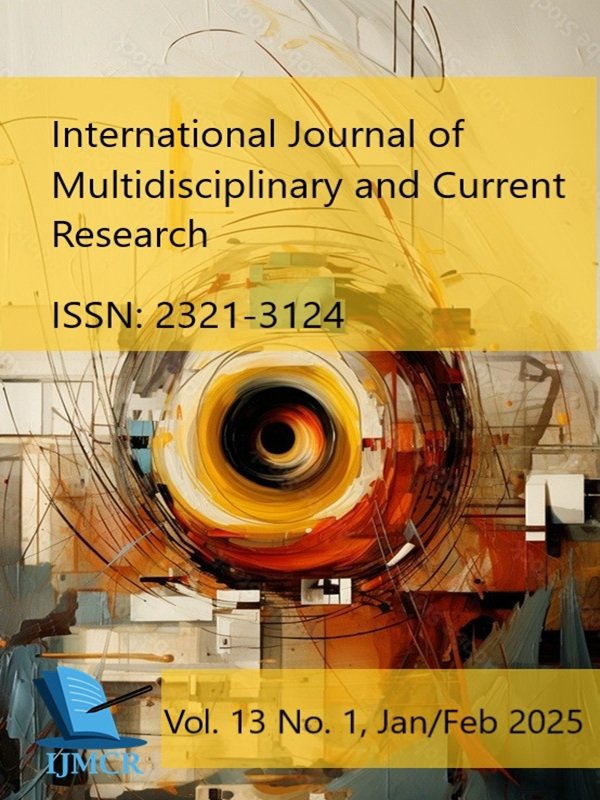Effects of Dolutegravir and Protease Inhibitors based Regimen on Renal and Liver Function Markers of HIV Patients Attending Daughters of Charity Hospital Abuja
DOI:
https://doi.org/10.14741/ijmcr/v.13.1.4Keywords:
Dolutegravir, Protease Inhibitors, Hiv, Renal Function, Liver Function, Markers, Patients, Doc AbujaAbstract
Human immunodeficiency virus (HIV) is a serious public health that has been managed by different HAART regimen for people infected to live a healthier live and also reduce the risk of HIV transmission. But this has come without its undesirable effects which may last only a few days or weeks or that may not appear for months or years after starting the drugs. The aim of this study was to determine the effects of dolutegravir and protease inhibitors (ATV/r, LPV/r) based regimen on liver and renal function markers of HIV patients attending Daughters of Charity Hospital Kubwa Abuja. The objectives were to determine the serum levels of renal (creatinine and Microalbumin) and liver (ALB, ALT, TB & DB) function markers of HIV positive patients on dolutegravir and protease inhibitors based regimen and HIV negative (control) subject, to determine the concentration of renal (creatinine and Microalbumin) and liver (ALB, ALT, TB & DB) function markers of HIV positive patients on dolutegravir and protease inhibitors based regimen and HIV negative (control) subject, based on age and gender (sex), determine the correlations between dolutegravir and protease inhibitors based regimens on renal and liver function markers of HIV patients, to determine the effects of these drugs on renal and liver function markers of HIV patients attending Daughters of charity hospital Abuja. A structured questionnaire was used to collect patient’s information on age, sex and duration on drugs while information such as drug regimen and last viral load value of patients were extracted from individual patient’s folder of those that consented to participate, while ethical approval was sought and obtained from the Hospital Coordinator Daughters of Charity Hospital. Ninety (90) consented participants comprising of sixty (60) HIV positive patients and thirty (30) negative controls were enrolled for this study. Five milliliters (5ml) of venous blood samples were aseptically collected by venipuncture from the median cubital vein of each participant. Five to ten milliliter of random urine samples were also collected from participants. Serum samples were analyzed for Albumin, Alanine aminotransferases, Bilirubin (total & direct) and Creatinine, which were quantified photometrically using Chemwell chemistry auto analyzer (Chemwell 2910) while urine samples were assayed for urinary microalbumin using turbidimetric immunoassay method. Data collected were processed and analyzed using statistical product and service solutions (SPSS) statistical software version 27, categorical variables were analyzed using chi-square and presented in frequency table, quantitative data on liver and kidney markers were analyzed using independent t-test and presented as mean and standard deviation. Pearson’s correlations were used to find out the correlation between protease inhibitors and dolutegravir based regimen, renal &liver function markers. Multiple logistic regressions were used to evaluate the effects of these drugs on renal and liver function markers of HIV patients on HAART. A p-value of less than 0.05 was statistically significant. Results showed that dolutegravir based regimen group shows a relatively lower mean values for DB (2.6 ± 1.2), TB (9.8 ± 3.4) and MA (16.3±20.0) compared to protease inhibitors based regimen while having a higher Cr (58.6±12.4), ALB (40±2.0) values and ALT activity (28.1±11.3). But when compared with controls there were significant difference (P ≤0.05) that exists in DB, TB, Cr, and MA whereas there were no significant difference (P ≥0.05) in ALB value and ALT activity. The mean concentrations of various parameters based on age and gender indicates that there were lower significant differences observed for females when compared with males in the protease inhibitors based regimen for ALB (p= 0.012), and TB (p= 0.013), while among age groups significant differences were seen for TB (p= 0.020). In the dolutegravir based regimen, lower significant differences were observed for females when compared with males for TB (p = 0.003), while for age groups significant differences were observed for ALT activity (p = 0.036) and Cr levels (p = 0.008). For the correlation between protease inhibitors and dolutegravir, renal and liver function markers, a significant negative correlation was observed between protease inhibitors and dolutegravir with regards to Direct Bilirubin (DB) (p = 0.001), Total Bilirubin (TB) (p = 0.001), and Microalbumin level (p = 0.034). For multiple logistic regression tests, both dolutegravir and protease inhibitors based regimen have an effects on the variables Albumin (ALB), Alanine Transaminases (ALT), Direct Bilirubin (DB), Total Bilirubin (TB), Creatinine (Cr), and Microalbumin (P value=0.0001) when considered jointly while protease inhibitors based regimen exerts a higher effects on DB, TB and Microalbumin (p value= 0.001, 0.001, 0.034 respectively). This highlights the importance of monitoring these parameters in individuals receiving protease inhibitors and dolutegravir based regimen as part of their HAART regimen. Nigeria HIV treatment guidelines should introduce urinary microalbumin testing as part kidney markers to be used in monitoring of HIV patients on the drugs studied and also includes testing of serum bilirubin among the liver markers especially for patients on second line receiving protease inhibitors based regimen. Also, more studies should be done in other HAART centers across Nigeria on the safety or otherwise of dolutegravir and protease inhibitors based regimen.

